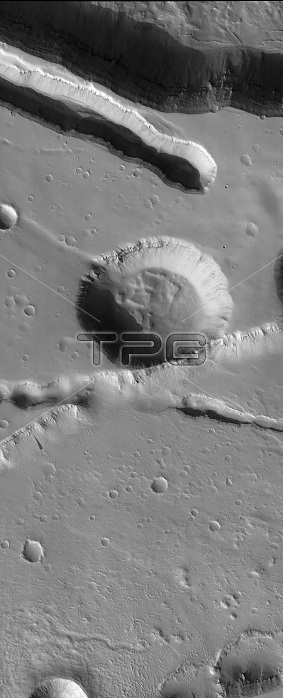
This HiRISE image covers a small portion of the Elysium Fossae fracture system extending to the northeast from the giant Elysium Mons volcano. The relative roles of tectonics (motion along faults), volcanism, and water remain puzzling. The large crater just north of the center of the HiRISE image appears to have formed by collapse, not by a meteorite impact. Had it been an impact crater, we would see a blanket of material (ejecta) that had been thrown out of the crater. In general, this image demonstrates that this area has a similar stack of materials as other parts of the giant volcanoes on Mars. The deepest exposed material appears to be a stack of lava flows that produce thick layers that shed boulders. Above is a layer of weak material, possibly wind blown dust. Interestingly, in some areas (especially in the northern part of this image) there are thin, harder layers, more resistant to erosion, within the generally weak and easily eroded surface layer. These resistant layers seem to be too thin to be lava flows, and may indicate that some other process has hardened or cemented (indurated) portions of the weak material.
| px | px | dpi | = | cm | x | cm | = | MB |
Details
Creative#:
TOP22310079
Source:
達志影像
Authorization Type:
RM
Release Information:
須由TPG 完整授權
Model Release:
N/A
Property Release:
No
Right to Privacy:
No
Same folder images:

 Loading
Loading